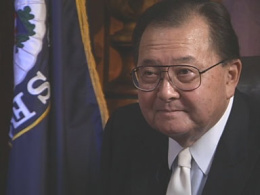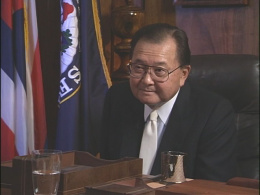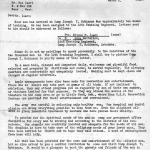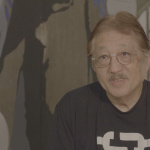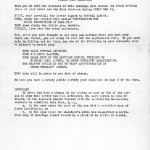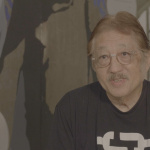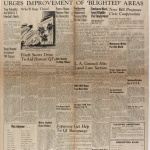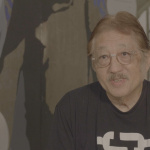Daniel Inouye
| Name | Daniel K. Inouye |
|---|---|
| Born | September 7 1924 |
| Died | December 17 2012 |
| Birth Location | Honolulu, HI |
| Generational Identifier |
Hawai'i Senator Daniel K. Inouye (1924–2012), formerly the most senior member of the U.S. Senate and the President Pro-Tempore, was known for his distinguished record as a legislative leader and as a World War II combat veteran with the 442nd Regimental Combat Team . Inouye was part of a group of politically active Japanese American veterans including Spark Masayuki Matsunaga and George Ryoichi Ariyoshi; together, they sparked a statewide democratic revolution during the 1950s which transformed Hawai'i politics. A Medal of Honor , Bronze Star, and Purple Heart awardee, Inouye was among the most powerful American statesmen, and his passing marked a critical loss for the Japanese American community, Hawai'i, and the nation. [1]
Early Life and World War II
Daniel K. Inouye was born to an Issei father and Nisei mother in Honolulu on September 7, 1924. Inouye's paternal grandparents originally came from Yokoyama village in Fukuoka prefecture and was of the samurai class. [2] His grandfather Asakichi was forced to immigrate to Hawai'i to pay off a family debt after a fire that had originated from the Inouye's house burned down three homes at a cost of $400. Inouye's parents, Hyotaro and Kame (Imanaga) Inouye, purchased a house on Coyne Street, in an area known as Bingham Tract but more readily known by its popular name—Chinese Hollywood—for its large number of Chinese families. As the eldest of four children, Inouye grew up in a household that blended Japanese and American traditions and attended Japanese school after completing his American education in the morning at McKinley High School.
On the morning of the Pearl Harbor attack, at just seventeen years of age, Inouye provided first aid to civilian casualties. Later as a pre-med freshman at the University of Hawai'i at Mānoa in 1943, he enlisted in the 442nd Regimental Combat Team, a segregated Japanese American unit. Inouye recalled the Nisei 's excitement and the ensuing "chaos" that greeted the news that they were approved for enlistment: [3]
As soon as he [Colonel Clarke] said that we were now eligible to volunteer, that room exploded into a fury of yells and motion. We went bursting out of there and ran—ran!—the three miles to the draft board, stringing back over the streets and sidewalks, jostling for position, like a bunch of marathoners gone berserk. And the scene was repeated all over Oahu and the other islands. Nearly 1,000 niseis volunteered that first day alone, and maybe because I was in better shape than most of them and ran harder, I was among the first 75. [4]
Nearly 3,000 local Nisei signed up for military service and on April 4, 2,855 enlisted men and twenty-five officers left Hawai'i for training. Inouye and his fellow Japanese Americans fought in France and Italy, where Inouye lost his right arm in battle in 1945, ending his dreams of becoming a surgeon. He was awarded a Distinguished Service Cross, a Bronze Star, and a Purple Heart for his heroics on the battlefield. The 442nd became the most decorated outfit in the United States Army with ten unit citations and 3,915 individual decorations, including forty-eight Distinguished Service Crosses and a Congressional Medal of Honor.
Postwar Fate and Activism
After the war, Inouye returned to attend the University of Hawai'i at Mānoa on the G.I. Bill and graduated in 1950 with a bachelor's degree in government and economics. One year earlier he had married Margaret "Maggie" Awamura, his wife for the next fifty-seven years. Their only child, Daniel Ken Inouye, Jr., was born in 1964. In 1952, he earned a law degree from George Washington University and began his law career as deputy public prosecutor for the city of Honolulu. However, his war experiences had fundamentally changed Inouye and other veterans, and they were unwilling to accept their second-class status within society, particularly in light of the lives that had been lost in order to prove the loyalty of the Japanese community. The 100th Infantry Battalion and 442nd Regimental Combat Team accounted for sixty percent of Hawai'i's fighting forces and eighty percent of total Hawai'i casualties. Of the 7,500 men who joined either of these units, 5,000 were awarded medals, approximately 3,600 of which were for battle wounds. Over 700 hundred died, 700 were maimed, and another 1,000 were seriously wounded. [5]
According to Inouye, after experiencing the horrors of war and sacrificing countless lives in an effort to prove their loyalty, many Nisei veterans returned to the Islands with a new perspective and desire for change. "So we knew we were expendable," explained Inouye, "but we knew that we had to pay that price . . . and we were willing to pay that price . . . but once we paid that price we wanted our place in the sun." [6] This desire for political, social, and economic change led many veterans to support the Democratic Party and align themselves with other prominent Nisei who had emerged as leaders within the Japanese community during World War II. Because of the absence of traditional Issei leaders who had been interned, and because of the war-spawned role reversal of traditional Japanese social patterns, prominent Nisei assumed the leadership roles within the Japanese community. They spearheaded organizations during the war such as the Council for Inter-Racial Unity, Morale Committees , and Emergency Service Committee .
Political Career
Determined to pursue a career in public service, Inouye became the first Japanese American to serve in the United States House of Representatives in 1959 and later was elected to the Senate in 1962. During his career Inouye held a number of positions, becoming the first Chairman of the Senate Select Committee on Intelligence in 1976 and serving as the third-ranking leader among Senate Democrats as Secretary of the Democratic Conference from January 1979 through 1988. He also chaired the Senate Democratic Central America Study Group to assess U.S. policy and served as Senior Counselor to the National Bipartisan Commission on Central America (also known as the Kissinger Commission). During the 1970s and 1980s, Inouye served on the Senate Watergate Committee and was also involved in the Iran-Contra investigations, chairing a special committee from 1987 until 1989.
As a proponent for Asian American causes, Inouye along with other Japanese American members of Congress were critical in the passage of the Civil Liberties Act of 1988 . When Japanese American Citizens League (JACL) officials first approached Senators Inouye and Spark Matsunaga and Congressmen Norman Mineta and Robert Matsui for advice in February 1979, Inouye suggested the idea of lobbying for a congressional study commission that would issue a report on the factors behind the incarceration of Japanese Americans, rather than a push for monetary compensation from the start. Thus, on August 2, 1979 Inouye and Matsunaga introduced S. 1647, the Commission on Wartime Relocation and Internment of Civilians Act that led to the creation of the Commission on Wartime Relocation and Internment of Civilians. The commission conducted an official governmental study of Executive Order 9066 , and in 1983 issued its findings in Personal Justice Denied . The findings revealed that the incarceration of Japanese Americans had not been justified by military necessity . Rather, the report determined that the decision to incarcerate was based on "race prejudice, war hysteria and a failure of political leadership." [7] In its findings, the commission recommended legislative remedies consisting of an official government apology, redress payments, and a public education fund to help ensure that this would not happen again.
Following the findings of the commission, Inouye let Matsunaga take the lead in sponsoring the Civil Liberties Act of 1988 that provided an official apology from President George H. Bush and $20,000 in redress to surviving Japanese Americans who had been incarcerated during World War II. While Inouye did not lobby individual senators like Matsunaga did, his support was essential as his presence as a high-ranking and respected senator who had been in office since Hawai'i gained statehood in 1959, made it difficult for his colleagues to vote against the legislation. At the time, Inouye was secretary of the Senate Democratic Conference and the third-ranking member of the Senate leadership, and had recently risen to national prominence as chair of the Senate Select Committee on Secret Military Assistance of Iran and the Nicaraguan Opposition (commonly known as the Iran-Contra committee). He was also the fourth-ranking member of the powerful Appropriations Committee and chair of the Select Committee on Indian affairs who had been the keynote speaker at the 1968 Democratic National Convention and member of the Watergate committee in 1973-74. Finally as a distinguished veteran who had served with the all-Nisei 100th Battalion and 442nd Regimental Combat Team, he represented what author Leslie T. Hatamiya describes as "the ideal of the true statesman and patriot," [8] having lost a limb for a nation that had incarcerated his fellow Japanese Americans in concentration camps. Inouye's military service and support for redress as well as the efforts of his fellow Japanese American colleagues led the way for the passage of the Civil Liberties Act.
In 1992, Inouye was embroiled in controversy after accusations surfaced of a past sexual assault of his former hair stylist by a political opponent. [9] Although the alleged victim refused to press charges, there were calls for an investigation into these allegations after reportedly nine other women also came forward with similar charges. [10] As news of these allegations quickly spread, Inouye denied any accusations of wrongdoing and an investigation was never conducted. [11] While some attributed this silence to the fact that there was only one identified accuser in an event that occurred seventeen years ago, others pointed out that this silence may have also been due to the domination of the Democratic Party in Hawai'i of which Inouye is a key figure. [12]
Inouye also faced public criticism by some Native Hawaiian activists over his perceived interference in federal reconciliation talks and his lack of involvement in the Protect Kaho'olawe Movement. [13] However, other Native Hawaiians have supported Inouye including Senator Daniel Akaka who worked with Inouye to pass the Apology Resolution whereby the United States government issued an apology to Native Hawaiians for the overthrow of the Kingdom of Hawai'i. [14]
Activities and Awards
Inouye served as the Chairman of the Senate Appropriations Committee and of the Senate Defense Appropriations Subcommittee; he was the Ranking Democrat on the Commerce, Science and Transportation Committee and the Indian Affairs Committee, and sat on the Rules Committee. He helped establish the Inter-parliamentary Exchange Program between the U.S. Senate and Japan's legislature.
In 2000, the Government of Japan presented him with the Grand Cordon of the Order of the Rising Sun. In May 2008, Inouye married Irene Hirano, president of the nonprofit U.S.-Japan Council, after his wife Margaret passed away on March 13, 2006. Following the death of West Virginia Sen. Robert Byrd on June 28, 2010, Inouye was sworn in as President Pro-Tempore of the Senate and was serving his ninth consecutive term.
On December 17, 2012, Inouye passed away from respiratory complications at the Walter Reed National Military Medical Center. He was survived by his wife, Irene Hirano Inouye, his son Daniel Ken Inouye Jr., Ken's wife Jessica, and granddaughter Maggie and step-daughter Jennifer Hirano. When Inouye was asked how he wanted to be remembered, he replied, "I represented the people of Hawaii and this nation honestly and to the best of my ability. I think I did OK." His last words were, "Aloha." [15] Following his death, Hawai'i Governor Neil Abercrombie appointed Lieutenant Governor Brian Schatz to fill Inouye's Senate seat. Since his passing, there have been a number of buildings, schools, centers, ships, and even a century-old lighthouse named after him. [16]
For More Information
Asian American Net. "Daniel K. Inouye: United States Senator." http://www.asianamerican.net/bios/Inouye-Daniel.html .
Brokaw, Tom. The Greatest Generation . New York: Dell Pub., 2001.
Coffman, Tom. Catch a Wave: a Case Study of Hawaii's New Politics . Honolulu: University Press of Hawaii, 1973.
Commission on Wartime Relocation and Internment of Civilians. Personal Justice Denied: Report of the Commission on Wartime Relocation and Internment of Civilians . Washington D.C.: Civil Liberties Public Education Fund; Seattle: University of Washington Press, 1997.
"Daniel K. Inouye." New York Times. http://topics.nytimes.com/topics/reference/timestopics/people/i/daniel_k_inouye/index.html .
Fuchs, Lawrence H. Hawaii Pono: A Social History . New York: Harcourt, Brace & World Inc., 1961.
Hatamiya, Leslie T. Righting a Wrong: Japanese Americans and the Passage of the Civil Liberties Act of 1988 . Stanford: Stanford University Press, 1993.
Inouye, Daniel K. Go For Broke . Englewood Cliffs, NJ: Prentice-Hall, Inc. 1967.
———. Journey to Washington . New Jersey: Prentice-Hall, Inc., 1967.
———. "No Man is an Island: the Rise of the Nisei in Hawaii." Paradise of the Pacific 77.5 (September 1, 1965): 32-34.
Matsuo, Dorothy. Boyhood to War: History and Anecdotes of the 442nd RCT . Korea: Mutual Publishing of Honolulu, 1992.
Footnotes
- ↑ Research for this article was supported by a grant from the Hawai‘i Council for the Humanities .
- ↑ Daniel K. Inouye, Journey to Washington (New Jersey: Prentice-Hall, Inc., 1967), 5.
- ↑ Inouye, Journey to Washington , 75.
- ↑ Dorothy Matsuo, Boyhood to War: History and Anecdotes of the 442nd RCT (Korea: Mutual Publishing of Honolulu, 1992), 44.
- ↑ Lawrence H. Fuchs, Hawaii Pono: A Social History (New York: Harcourt, Brace & World Inc., 1961), 306.
- ↑ Fuchs, Hawaii Pono , 306.
- ↑ Commission on Wartime Relocation and Internment of Civilians, Personal Justice Denied: Report of the Commission on Wartime Relocation and Internment of Civilians (Washington D.C.: Civil Liberties Public Education Fund; Seattle: University of Washington Press, 1997), 18.
- ↑ Leslie T. Hatamiya, Righting a Wrong: Japanese Americans and the Passage of the Civil Liberties Act of 1988 (Stanford, California: Stanford University Press, 1993), 112.
- ↑ Vickie Ong, "Kwock tells why she went public with story," Honolulu Advertiser , Oct. 17 1992, A-5; Kevin Dayton and Vickie Ong, "Walker releases tape, disappears," Honolulu Advertiser , Oct. 17, 1992, A-5; Becky Ashizawa, "Kwock: Inouye forced me to have sex with him," Honolulu Star-Bulletin , Oct. 17, 1992 A-1.
- ↑ Andy Yamaguchi, "Group’s letters urge Senate Probe of Inouye," Honolulu Advertiser , Nov. 25, 1992, A-3.
- ↑ "Kwock news spread fast, poll shows," Honolulu Advertiser , Oct. 29, 1992, A-2.
- ↑ Jane Gross, "Accusations against Hawaii Senator Meet a Silence in His Seat of Power," New York Times , Dec. 14, 1992, Section A, Page 15; Denby Fawcett, "Would Dan Inouye Have Survived 1992 Sex Allegations Today?" Honolulu Civil Beat , Nov. 28, 2017, https://www.civilbeat.org/2017/11/denby-fawcett-would-dan-inouye-have-survived-1992-sex-allegations-today/ ; David T. Johnson, "Hirono Finally Speaks Up About Sexual Assault," Honolulu Civil Beat , Sept. 25, 2018, https://www.civilbeat.org/2018/09/hirono-finally-speaks-up-about-sexual-assault/ .
- ↑ Yasmin Anwar, "OHA Trustee won’t back down," Honolulu Advertiser , Nov. 11, 1991, A-1; "Inouye ring became an issue in 1992," Honolulu Advertiser , Nov. 11, 1999, A-15; "Mililani Trask explains her comments," Honolulu Advertiser , Nov. 11, 1999, A-15.
- ↑ "Aloha, Senators Inouye and Akaka," Rowena Akana website, Feb., 15, 2013, https://www.rowenaakana.org/tag/senator-daniel-akaka/ ; Public Law 103-150, 103d Congress, Nov. 23, 1993, https://www.govinfo.gov/content/pkg/STATUTE-107/pdf/STATUTE-107-Pg1510.pdf .
- ↑ "Statement on the Passing of Senator Daniel K. Inouye," http://www.inouye.senate.gov/news/press-releases/statement-on-the-passing-of-senator-daniel-k-inouye , accessed on January 7, 2013.
- ↑ Tiffany Hill, "Inouye Namesakes in Honolulu," Honolulu Magazine , Dec. 10, 2013, https://www.honolulumagazine.com/inouye-namesakes-in-honolulu/ .
Last updated March 2, 2022, 5:12 p.m..

 Media
Media
